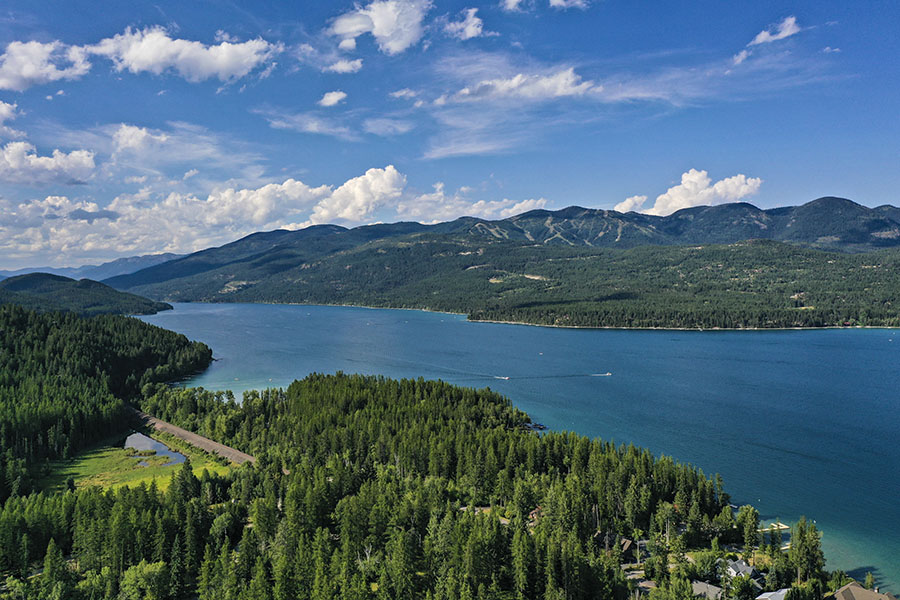In an Aug. 9 report that the United Nations called a “code red for humanity,” the Intergovernmental Panel on Climate Change (IPCC) charted the pace of Earth’s warming as nearing its limits, estimating that within a decade planetary temperatures will have exceeded a level world leaders previously identified as a preventable threshold.
“It’s just guaranteed that it’s going to get worse,” according to report co-author Linda Mearns, a senior climate scientist at the U.S. National Center for Atmospheric Research. “Nowhere to run, nowhere to hide.”
As the planet warms, regions will be hit more frequently not just by extreme weather events but by multiple climate disasters at once, the report warned, describing the situations unfolding across the western U.S., where heat waves, drought and wildfires compound the damage, as the new normal.
However, the report also identified “strong and sustained reductions in emissions of carbon dioxide and other greenhouse gases” as a measure to mitigate the acceleration of climate change and its consequences, including through local and regional initiatives.
For example, in Whitefish, city leaders in 2018 adopted the Whitefish Climate Action Plan (CAP), with the overarching goal of reducing city facility emissions by 26% by 2025, using 2016 emissions as a baseline. That emission reduction goal aligns with the Paris Climate Agreement.
At a recent Whitefish City Council work session, city leaders considered going a step further by creating a full-time sustainability coordinator position, per a recommendation from the city’s CAP Standing Committee.
“This summer, Whitefish, as well as the rest of the Western United States, is experiencing record heat waves, drought, wildfires, and unhealthy air quality,” according to the committee’s recommendation to council.
The 2018 CAP discusses the trend toward this caliber of climate-exacerbated summer weather, as well as the federal government’s inclusion of resilience and sustainability requirements in its large infrastructure grant programs for water, sewer, storm water, and transportation. Local governments such as Whitefish, with a record of prioritizing and investing in “green infrastructure,” will stand a better chance of receiving funding if they move forward on actionable policies, the recommendation notes.
“Each city department will continue to be impacted by climate change,” according to the recommendation. “A sustainability coordinator could serve as a central liaison for reviewing sustainability/resilience infrastructure grant opportunities.”
The city would benefit from a dedicated person to implement the plan, coordinate with the city council and staff, and advance climate goals, according to CAP standing committee member Karen Hilding. Further, Hilding said the committee would like additional direction on how to better integrate recommendations with the city’s budgeting process, noting that implementation of the plan has stalled since last July.
“The CAP established a foundation for Whitefish to make the transition to a clean energy economy and improve resilience to climate change impacts,” Hilding wrote in the recommendation to council. “However, without a central staff person heading up these efforts progress is difficult. Implementing the CAP requires ongoing monitoring and reporting, engaging with the community, evaluating possible actions, and continuous coordinated efforts by multiple city departments … A sustainability coordinator position would allow staff in the Public Works and Planning Departments to focus on other duties which is especially important with the large rate of growth.”
Earlier this summer, the city of Whitefish also unanimously approved a resolution urging the U.S. government to pass the Energy Innovation and Carbon Dividend Act (HR 2307), joining more than 140 local governments who have passed resolutions supporting the federal legislation.
In Montana, Whitefish is not alone in its efforts to pursue a climate action plan, joining Missoula, Helena, Bozeman and Red Lodge in adopting plans; however, those other municipalities have also created sustainability planning and coordination positions.
Meanwhile, an increasing number of cities across the U.S. are adopting climate action plans, led by major metropolitan locations in recent years such as Seattle, Portland, Boston, Minneapolis and Chicago. In 2007, Denver became one of the first large cities to craft a strategy to address the potential threats and broad-reaching impacts of climate change. The city has been tracking and setting goals for reducing greenhouse gas emissions and moving toward cleaner, sustainable forms of energy through city policies, procedures and investments. Denver and other cities have also incorporated climate-friendly directives in planning and building codes to various degrees, from installing energy-efficient street lights to offering water conservation rebates and permitting incentives for businesses.
In the IPCC report, scientists eased back slightly on the likelihood of the absolute worst climate catastrophes; however, the 3,000-plus-page report from 234 scientists says warming is already accelerating sea level rise and worsening extremes such as heat waves, droughts, floods and storms. Tropical cyclones are getting stronger and wetter, while Arctic sea ice is dwindling in the summer and permafrost is thawing. All of these trends will get worse, the report said.
For example, the kind of heat wave that previously occurred only once every half-century now happens once a decade, and if the world warms another degree Celsius (1.8 degrees Fahrenheit), it will happen twice every seven years, the report said.
The IPCC report, which calls climate change clearly human-caused and “unequivocal” and “an established fact,” also makes more precise and warmer forecasts for the 21st century than it did last time it was issued in 2013.
